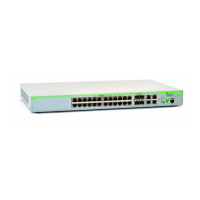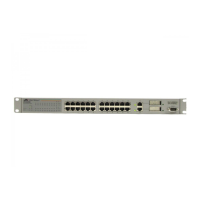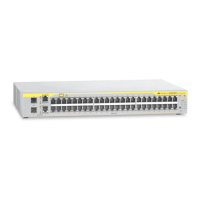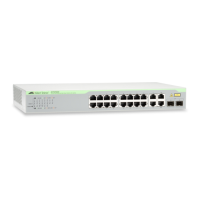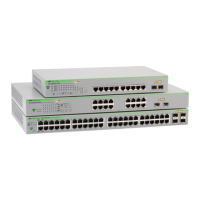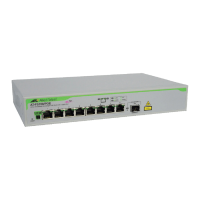GS9790M Series Switch Installation Guide
31
Wiring
implementation
The IEEE 802.3af standard defines two methods for the delivery of DC
power over twisted pair cable by a PSE, such as the switch, to PDs. These
methods, known as modes A and B, identify the wires within the cable that
carry the DC power from the PSE to a PD.
Twisted pair cabling typically consists of eight wires. With 10BASE-T and
100BASE-TX devices, the wires connected to pins 1, 2, 3, and 6 on the
RJ- 45 connectors carry the network traffic while the wires connected to
pins 4, 5, 7, and 8 are unused. With 1000BASE-T devices, all eight wires
are used to carry network data.
It takes four wires to deliver DC power to a PD. With Mode A, the power is
delivered on pins 1, 2, 3, and 6. These are the same pins in 10BASE-T
and 100BASE-TX devices that carry the network data. With mode B, the
power is provided over the spare wires.
The ports on GS970M Series PoE switches deliver the power using pins 1,
2, 3, and 6, which corresponds to mode A in the IEEE 802.3af standard.
Powered devices that comply with the IEEE 802.3af standard are required
to support both power delivery methods. Legacy devices that do not
comply with the standard will work with the switch if they are powered on
pins 1, 2, 3, and 6.

